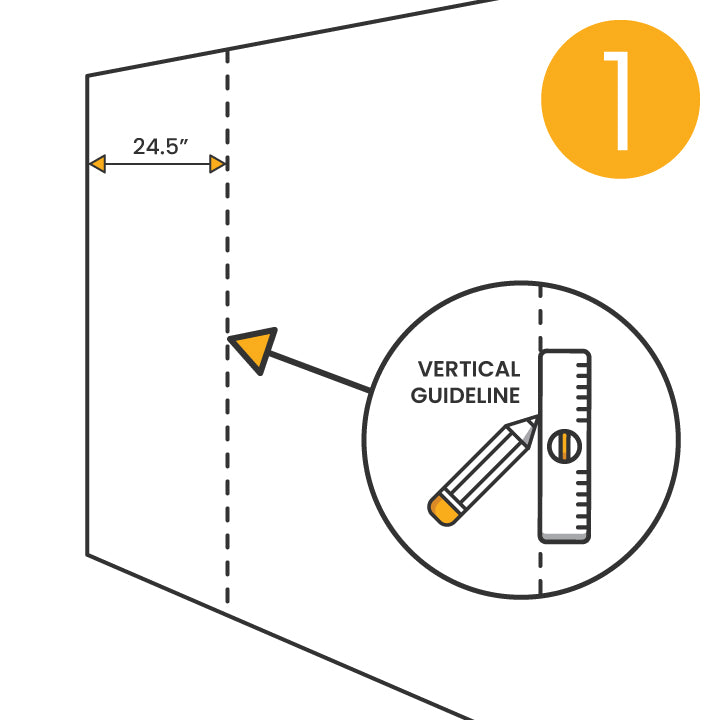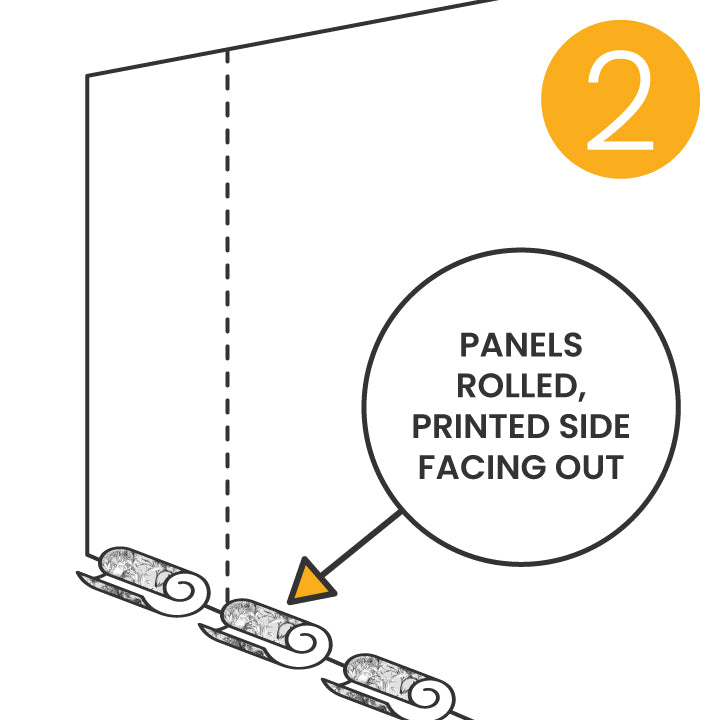
Installing Your Wallpaper
With the help of a friend, you’ll be standing back and admiring your new custom wallpaper in no time!
What You'll Need
-

Measuring Tape
-

Pencil & Level
-

Utility Knife
-

Squeegee (supplied)
-

Ladder
Important Installation Tips
- Before you begin, ensure your walls have been properly prepped. See our Preparing Your Wall page for full details.
- Your wallpaper arrives in equally sized panels corresponding to the quantity you've ordered. Before you begin installing, we recommend you confirm that all panels are accounted for and that none of them were received damaged.
- The panels are produced to align horizontally. Make sure each panel is aligned evenly at the top so the design flows seamlessly from one to the next, creating a smooth, continuous look across your wall.
- Before you trim around any electrical outlets or switches, ensure the power to them has been turned off via your breaker box. Better safe than sorry!
Hanging Your Wallpaper Panels

Step 1
Starting at the edge of the wall, use your level and a pencil to draw a straight vertical line a panel’s width minus ½” down the entire wall. Since wall corners are often not perfectly square, this overlap will help account for any variations in your wall. The excess wallpaper will be trimmed off once it’s fully installed. The vertical line you draw with the help of your level will act as a guideline to which to align your first panel, ensuring it is applied straight.

Step 2
Lay the individually rolled panels on the floor, along the wall, with the printed side facing out. If your pattern repeats every 25", all panels are labeled ‘1’ and can be installed in any order. If your pattern repeats every 50", the panels are labeled ‘1’ and ‘2’ and should be installed in sequence (i.e. 1, 2, 1, 2, and so on.). There will likely be excess overlap on the last panel. This extra material can be trimmed off later. TIP: Since the panels overlap by ½”, you can hang your wallpaper left to right, or right to left. For example: when applying wallpaper to the left wall, hanging the panels from right to left is recommended. Conversely, for the right wall, hanging from left to right will minimize seam visibility as you enter the room.

Step 3
Peel back approximately 18” of the backing from the top portion of your first panel, then gently adhere it to the wall. Ensure alignment with the vertical guideline previously drawn, with the assistance of your helper. Make sure to leave approximately 2” of overage along the ceiling line and a ½” overlap on the corner. This excess material will also be trimmed off later.

Step 4
Use your squeegee to carefully smooth out bubbles and creases, working from the upper-middle of the panel outward. Regularly verify alignment with the vertical guideline, with the assistance of your friend. Readjust the panel if needed. As your friend gradually peels off the backing and moves down the wall, continue the process of smoothing out bubbles and creases. Once the first panel is flawlessly positioned, you can rest assured that subsequent panels will align perfectly!

Step 5
The panels are designed to overlap by ½”. Align each panel by matching up the image to the previously installed panel, working your way from top to bottom. If you’re having difficulty aligning the pattern, gently remove the panel, reposition and try again. Once the image is aligned, you can smooth out the panel with your squeegee. TIP: Before removing the backing, dry fit each panel to ensure you know how it should align to the previous panel. Repeat steps 3 through 5 for all remaining panels.

Step 6
Once you have installed the entire wallpaper, trim off any excess material using a utility knife, snapping off a fresh blade approximately every 8’. This will ensure a nice, clean edge. We recommend changing the blade frequently to avoid tearing the wallpaper. When trimming, make long evenly pressured cuts without lifting the blade. If you’re not comfortable trimming your wallpaper free-hand, a straight edge such as a level, the squeegee, or large ruler can be used as a guide.
Removing Your Wallpaper Panels
- When it’s time for a change, your wallpaper can be removed from the wall. Temperature, humidity and wall preparation determine how long the wallpaper remains in place and still be easily and cleanly removed.
- Starting from the top and working your way down, slowly peel the material back on itself at a 180 degree angle until you reach the bottom of the panel. Continue the same process until all panels have been removed.
- Once the wallpaper has been completely removed, wipe off any remaining adhesive using a damp cloth or sponge.






